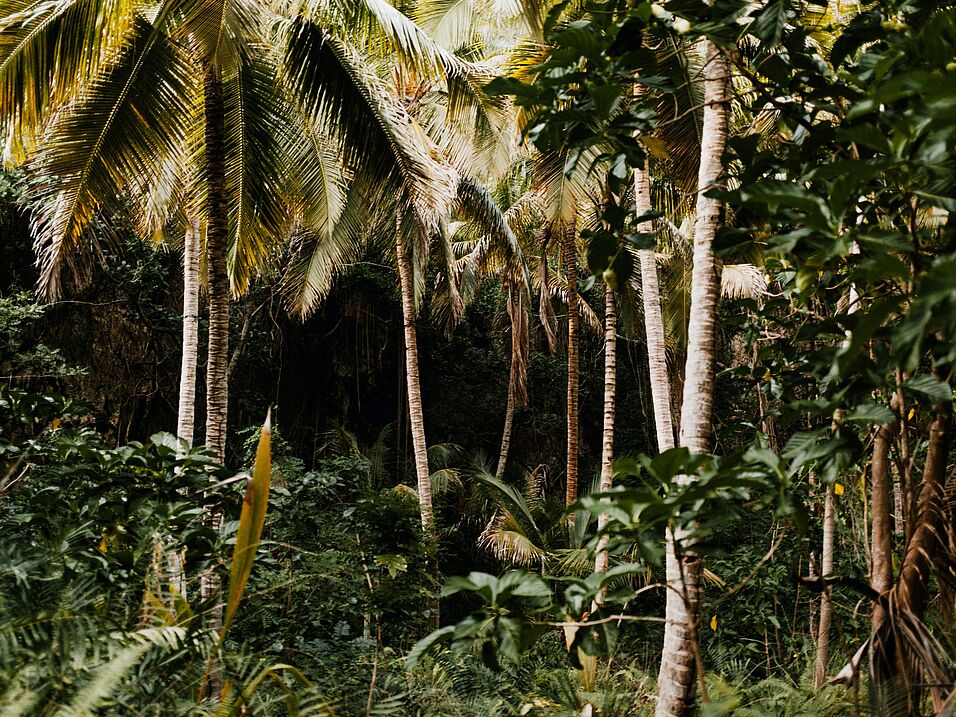Tropical forests are highly heterogeneous in terms of prevailing climate, soils and disturbance status, with strong repercussions on their biogeochemical functioning. How they will respond to future global changes can to date only be studied by extrapolation from historical studies of ecosystem properties, forest structure, biomass and tree growth or from manipulative experiments. The lack of knowledge and of robust tropical forest data does not allow any conclusive interpolation of trends into the future. The available evidence nonetheless points to strong responses of tropical forests to global changes, most of them being negative in terms of carbon sequestration, nutrient cycling and biodiversity, indicating that they will rather feed forward on global warming and atmospheric change. Due to the extraordinarily high biodiversity and structural and biogeochemical heterogeneity of tropical forests, experimental manipulations in tropical forests simulating global changes are scarce or have not been undertaken at all. To study responses of tropical trees and ecosystems to past and current global changes we therefore rely on proxy studies such as isotopes in tree rings, long-term time series of net primary production across interannual variations in climate, large transect studies or meta-analyses synthesizing tropical forest responses across large gradients in climate and soil fertility. Our studies here rely on a suite of such approaches, ranging from reconstructions of tree growth and physiology using tree ring and herbarium analyses with stable isotope measurements, to long-term observations of the relation between forest productivity and climate, meta-analyses, large biodiversity – ecosystem function experiments in reforestation trials and to manipulative experiments with nutrient addition to advance our understanding of nutrient limitation to tropical forest functioning.
Key publications:
- F. Hofhansl, J. Schnecker, G. Singer, W. Wanek (2015) New insights into mechanisms driving carbon allocation in tropical rainforests. New Phytologist 205: 137–146.
- F. Hofhansl, J. Kobler, J. Ofner, S. Drage, EM. Pölz, W. Wanek (2014) Sensitivity of tropical forest aboveground productivity to climate anomalies in SW Costa Rica. Global Biogeochemical Cycles 28: 1437-1454.
- PG. Taylor, GP. Asner, K. Dahlin, C. Anderson, DE. Knapp, RE. Martin, J. Mascaro, R. Chazdon, R. Cole, W. Wanek, F. Hofhansl, A. Townsend (2015) Landscape-scale controls on aboveground forest carbon stocks on the Osa Peninsula, Costa Rica. PlosONE 10(6): e0126748.
- R.J.W. Brienen, P. Hietz, W. Wanek, M. Gloor (2013) Oxygen isotopes in tree rings record variation in precipitation d18O and amount effects in the south of Mexico. Journal of Geophysical Research – Biogeosciences 118: 1604-1615.
- P. Hietz, B.L. Turner, W. Wanek, A. Richter, C.A. Nock, S.J. Wright (2011) Pervasive change in the nitrogen cycle in tropical forests. Science 334, 664-666.
- C. Nock, P. Baker, W. Wanek, A. Leis, M. Grabner, S. Bunyavejchewin, P. Hietz (2011) Long-term increases in intrinsic water use efficiency do not lead to increased stem growth in a tropical monsoon forest in western Thailand. Global Change Biology 17, 1049-1063.

